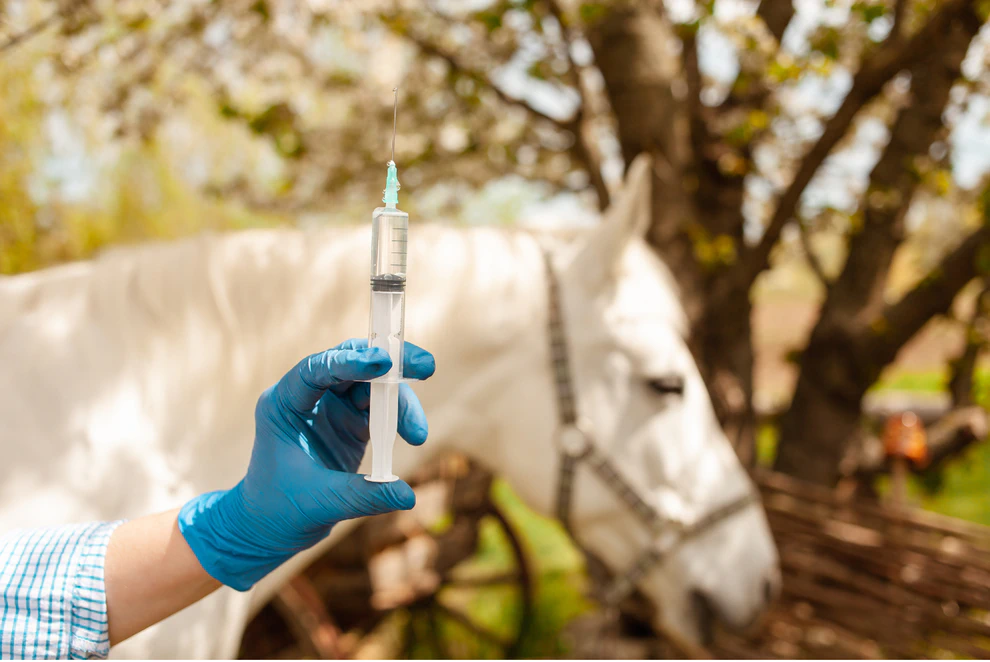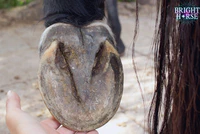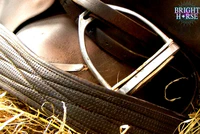Low-Stress Handling Techniques: The Role of Behavioural Techniques in Veterinary Care
Introduction
Evidence from the production animal sector suggests that reduced animal stress increases handleability, productivity and human safety (Hemsworth, 2003). In zoos there is increased recognition of the importance of training to reduce fear and stress during human-animal interactions (HAIs) and husbandry and veterinary procedures (HVPs) (Ward & Melfi, 2013)
Low stress handling (LSH) techniques have become increasingly common in companion animal practice and owners are actively seeking out veterinary practices offering these techniques (Herron et al, 2014). Such services are relatively uncommon in equine veterinary practice, but it is likely that there will be increasing demand for them in the future (Carroll et al, 2022)
Handling horses in veterinary settings presents significant challenges due to the very fact that ethologically they are prey animals. In addition, domestication and breeding by humans has resulted in a species with heightened sensitivity to stress. When horses experience fear, anxiety, or stress (FAS), these can trigger dangerous behaviours such as flight responses, rearing, or striking, the function of which are to create distance from the perceived threat. This increases the risk of injury to both the horse and the veterinary team (Pearson et al., 2021; Carroll et al., 2022). Traditional methods such as physical restraint or sedation (chemical restraint), often used to control these reactions, do not alleviate the underlying fear or anxiety. Nor do they address the underlying function of the behaviour. Indeed, these methods may exacerbate stress, creating negative associations that can jeopardise future veterinary visits (McGreevy et al., 2017; Budzyńska et al., 2023).
The goal of LSH is to reduce fear and anxiety, facilitating safer, more effective care. Research shows that understanding a horse’s behaviour, especially its stress response, is crucial for veterinarians aiming to ensure patient cooperation during procedures (Carroll et al., 2022). Techniques such as desensitisation and counter-conditioning are becoming widely recognised as effective ways to reduce stress and improve cooperation during veterinary care (Squibb et al., 2018; Rogers et al., 2022). Horses managed with LSH approaches are more likely to exhibit calm behaviour (less distance-increasing behaviours), reducing the need for physical or chemical restraint and increasing the safety of handling (Pearson et al., 2021). Furthermore, handling horses in a calm, stress-free manner not only enhances their welfare but also improves diagnostic accuracy. As the veterinary field evolves, incorporating LSH into routine care is crucial to improve both animal welfare and veterinary safety.
Traditional Restraint Methods
Traditional restraint methods, such as sedation, twitches, and the use of devices like Chiffney bits, are frequently used in equine veterinary care to control horses during procedures. While these methods may achieve short-term control, and assist in ‘getting the job done’ (Carroll et al., 2022) they often fail to address the underlying fear, anxiety, and stress (FAS) that horses experience (Flakoll et al., 2017). Sedation, commonly used to prevent movement, does not reduce fear or anxiety but rather suppresses visible behavioural responses. As a result, horses may still associate the procedure or environment with fear, leading to long-term negative associations (Fraser et al., 2022). Horses sedated for veterinary interventions often become more fearful in future encounters, increasing the risk of injury to both the animal and the veterinary staff (McGreevy et al., 2018).
Twitching, a common physical restraint method, involves applying pressure to the horse’s lip or ear to immobilise the animal. The lip twitch has been found to subdue horses temporarily through the release of endorphins, which may have a calming effect for the first few minutes. However, when applied for longer durations, the twitch increases heart rate and stress levels, making it less effective and potentially harmful (Flakoll et al., 2017; McGreevy et al., 2018). The ear twitch, on the other hand, has been found to induce fear and pain, as evidenced by increased cortisol levels and heart rate variability during its application (Flakoll et al., 2017). This type of restraint often leads to head-shyness and long-term behavioural issues in horses (McGreevy et al., 2018).
The use of devices such as the Chiffney bit can also escalate a horse’s stress. Although the Chiffney effectively prevents the horse from moving, it suppresses physical reactions rather than addressing the root cause of fear. This leads to heightened vigilance or defensive behaviours during future procedures, reinforcing the cycle of stress and anxiety (Fraser et al., 2022; McGreevy et al., 2018).
Horses that display distance-increasing behaviours who are then restrained in this manner will learn other evasive behaviours, some of which will can be increasingly dangerous to vet, owners and handlers. This is because the function of the behaviours is not being addressed, and therefore in effect the horse must ‘shout louder’. Once the horse learns that a bigger display of distance-increasing behaviours is effective, through negative reinforcement (removal of pressure), these become very challenging to modify. In these circumstances horses are subjected to even harsher means of control, increasing the risk of injury to all parties.
Moreover, traditional restraint methods can negatively impact diagnostic accuracy. Horses under significant stress, such as during a lameness evaluation, may mask clinical signs due to the physiological effects of fear, including muscle tension and adrenaline-induced arousal. This can cause subtle signs of lameness to be overlooked, leading to misdiagnosis or delayed treatment (Flakoll et al., 2017; Carroll et al., 2022). Therefore, while restraint methods may appear effective in the short term, their long-term effects include reinforcing fear, reducing cooperation, and compromising diagnostic outcomes.
Benefits of Low-Stress Handling
LSH techniques offer significant advantages in equine veterinary care, improving safety, cooperation, and diagnostic accuracy. By employing systematic desensitisation and counter- conditioning, veterinarians can help horses become more comfortable with procedures that would otherwise provoke anxiety, such as injections or dental work (McGreevy et al., 2018). Studies show that LSH not only reduces the risk of injury but also helps the horse learn to tolerate or even cooperate during veterinary interventions (Rogers et al., 2022).
In addition to safety, increased cooperation is a major benefit. Techniques like positive reinforcement—where horses are rewarded for calm, cooperative behaviour—help establish a more trusting relationship between the horse and veterinary personnel (Lethbridge, 2009). Horses that have been trained using these techniques are more likely to engage positively during veterinary care, reducing the need for physical restraint or sedation (McGreevy et al., 2018). For example, desensitising a horse to the feel of a needle by gradually introducing the sensation can lead to reduced anxiety and resistance during vaccinations (Lethbridge, 2009).
Another key benefit is enhanced diagnostic accuracy. When horses are handled in a calm, stress-free environment, subtle signs of lameness or other clinical issues are more easily detected, resulting in more accurate assessments and treatment plans (Pearson et al., 2021).
Horses that regularly experience LSH for veterinary care are less likely to develop negative associations, resulting in calmer behaviour and cooperation during future visits (McGreevy et al., 2018). This approach creates a positive feedback loop, where each neutral or ideally positive experience, builds the horse’s tolerance and willingness to cooperate in the long term (Rogers et al., 2022) enhancing their welfare.
Low-Stress Handling Techniques
Implementing LSH techniques involves applying behavioural science principles such as systematic desensitisation, counter-conditioning, and positive reinforcement. These methods are crucial for reducing fear and anxiety in horses, promoting cooperation during veterinary procedures, and improving safety for both the horse and the veterinarian.
Systematic Desensitisation
- Systematic desensitisation is a gradual process where a horse is introduced to a fear-inducing stimulus at a low level, and the intensity of exposure is slowly increased as the horse becomes comfortable. For instance, a horse fearful of needles might first be shown the needle from a distance, progressing to touching the horse with the needle over multiple sessions without administering an injection, until the horse no longer reacts negatively (McGreevy et al., 2018). This technique aims to raise the horse’s threshold for fear reactions, preventing panic during procedures (Lethbridge, 2009) .
Counter-Conditioning
- Counter-conditioning involves pairing a stressful stimulus with something positive, such as food rewards, to change the horse’s emotional response. For example, if a horse is fearful of clippers, offering a reward every time the clippers are brought near can help the horse associate the sound and presence of clippers with a positive outcome (Lethbridge, 2009). Eventually, the horse will learn that the once fear-inducing stimulus predicts a pleasant event, leading to calm behaviour even in the face of previously stressful stimuli (McGreevy et al., 2018) .
Positive Reinforcement and Cooperative Care
- Positive reinforcement training, where horses are rewarded for desirable behaviour, can foster a more cooperative relationship between horse and handler. This technique is particularly useful for encouraging voluntary participation in routine procedures. For example, horses can be trained to stand calmly on a target mat, indicating their readiness for treatment. When the horse steps off the mat, the procedure is paused, giving the horse a sense of control, which helps reduce stress (Pearson et al., 2021). This type of cooperative care is effective in teaching horses to willingly participate in tasks such as blood draws or hoof handling, reducing the need for physical restraint (Carroll et al., 2022) .
Reading Equine Stress Signals
- Veterinarians must learn to recognise subtle stress signals in horses, changes in ear posture, prominent sclera, tension in chewing muscles and flared nares, have been linked to negative affective states in the horse (Costa et al., 2017). Early identification of these signals allows handlers to adjust their approach before the horse escalates into more dangerous behaviours (McGreevy et al., 2018). Combining desensitisation with a calm environment and positive reinforcement helps maintain the horse’s emotional state within manageable boundaries, improving both safety and the likelihood of a successful procedure (Lethbridge, 2009).
Creating a Calming Veterinary Environment
- Reducing stress in the veterinary setting also involves environmental changes. Ensuring a quiet, calm clinic environment, allowing horses time to explore the examination area, and minimizing loud noises can significantly reduce anxiety. Small adjustments like using soft bedding and maintaining a consistent, gentle handling approach can make a big difference in reducing fear.
Practical Application for Veterinary Professionals
Veterinarians are in a unique position to educate horse owners on the benefits of low-stress handling techniques, both for routine care and emergency procedures, and where challenges have been experienced, refer owners on to a Clinical Animal Behaviourist (CAB) or a Veterinary Behaviourist to support the horse prior to, and during veterinary procedures. The integration of these techniques and a multi-disciplinary team into daily handling practices can reduce stress and improve safety for everyone involved.
Educating Owners
One way to ensure success is by guiding owners to implement these strategies at home, under appropriate professional guidance, helping horses build positive associations with veterinary procedures. This might include practicing desensitisation techniques at home, for example, owners can practice needle desensitisation by regularly touching the horse’s neck with a blunt object or hand, while rewarding the horse for standing still (Rogers et al., 2022). This helps the horse become familiar with the sensation and reduces anxiety when the veterinarian arrives for a real-life injection. By consistently applying these low-stress techniques, owners can help prepare their horses for future veterinary visits, making procedures less stressful.
Step-by-Step Guide for Vets
For veterinary professionals, integrating low-stress handling techniques can be as simple as following a few key principles: Recognise Stress Early: Pay attention to early signs of stress, such as tense facial muscles, wide eyes (with increased white/ sclera showing and often accompanied by high head carriage and flared nostrils) or ears held back, and modifying the handling approach before the horse’s behaviour escalates.
- Desensitisation: Begin desensitisation well in advance of any procedure, allowing the horse to get used to the sights, sounds, and sensations of the equipment it is planned to use in the procedure.
- Use of Positive Reinforcement: Reinforce calm and cooperative behaviour with rewards such as food or scratches. Verbal praise is not positive reinforcement unless it has been paired with a reward. This encourages the horse to voluntarily participate in procedures, reducing the need for restraint or sedation by using cooperative care techniques. Target training, a method based on positive reinforcement, is widely used to support treatments within zoological settings (Fagen et al., 2014). Take Breaks: If a horse begins showing signs of stress, take short breaks to allow the animal to reset emotionally. This helps prevent escalation and maintains a more positive atmosphere for the horse.
- Pain assessment and management: Where pre-existing pain is present or where the procedure itself might reasonably induce a degree of pain response (due to use of equipment, restraint or positioning required) this should be assessed, and appropriate pain relief administered at the earliest opportunity before any procedures are attempted.
Importance of a Calm Environment
In addition to educating owners, veterinarians can also modify the environment to reduce stress for horses. Simple changes like providing quiet spaces, providing soft bedding, allowing the horse time to familiarise itself with the examination area, ensuring consistent, calm handling by all staff and using familiar handlers can make a significant difference in reducing fear and anxiety during procedures (Carroll et al., 2022; Rogers et al, 2022). The introduction of a companion horse can often facilitate diagnostics/treatment. (Christensen et al 2008) By creating a stress-free environment, horses are more likely to remain calm, making diagnostics and treatment more efficient and accurate.
Further education in low-stress handling techniques A programme of proactive continuing education on this subject will reap rewards for the veterinary team, clients and the horses in their care. Various resources are available online and in print, with details provided below.
Step-by-Step Guide for Vets
- Recognise signs of stress early
- Desensitisation
- Use of positive reinforcement
- Take breaks- allow your patient to set the pace
- Pain assessment and management
- Maintain as calm and environment as is feasible
- Ongoing CPD in this field
Conclusion
Incorporating LSH into equine veterinary practice is essential for improving both animal welfare and the safety of veterinary professionals. Traditional methods of restraint, such as sedation and twitches, while effective in the short term, often exacerbate long-term behavioural issues by reinforcing fear and anxiety. These techniques do little to address the underlying causes of stress and can compromise diagnostic accuracy, particularly in procedures like lameness evaluations (McGreevy et al., 2018; Carroll et al., 2022).
In contrast, LSH based on principles of desensitisation, counter-conditioning, and positive reinforcement, enable veterinarians to manage horses more effectively, enhancing cooperation during procedures. Not only does this improve immediate outcomes by reducing the risk of injury and promoting long-term positive associations with veterinary care (Pearson et al., 2021; Lethbridge, 2009). Utilising a multidisciplinary team to practice these techniques addresses both the horse’s emotional state as well as their physical needs (Carroll et al., 2022).
References:
- Budzyńska, M., Jarosz, M., Kapustka, J. (2023). Possibilities of Reducing Fearfulness and Stress in Horses by Prophylactic Methods and Behavioural Therapies. Med. Weter., 79(2), 65-71.
- Carroll, S.L., Sykes, B.W., Mills, P.C. (2022). Moving toward Fear-Free Husbandry and Veterinary Care for Horses. Animals, 12, 2907. https://doi.org/10.3390/ani12212907 .
- Christensen, J., Malmkvist, J., Nielsen, B., & Keeling, L. (2008). Effects of a calm companion on fear reactions in naive test horses.. Equine veterinary journal, 40 1, 46-50 . https://doi.org/10.2746/042516408X245171 .
- Costa, E., Bracci, D., Dai, F., Lebelt, D., & Minero, M. (2017). Do Different Emotional States Affect the Horse Grimace Scale Score? A Pilot Study. Journal of Equine Veterinary Science, 54, 114–117. https://doi.org/10.1016/j.jevs.2017.03.221 .
- Fagen, A., Acharya, N., & Kaufman, G. (2014). Positive Reinforcement Training for a Trunk Wash in Nepal’s Working Elephants: Demonstrating Alternatives to Traditional Elephant Training Techniques. Journal of Applied Animal Welfare Science, 17, 83 - 97. https://doi.org/10.1080/10888705.2014.856258 .
- Flakoll, B., Ali, A.B., Saab, C.Y. (2017). Twitching in veterinary procedures: How does this technique subdue horses? Journal of Veterinary Behavior, 18, 23-28. https://doi.org/10.1016/j.jveb.2016.12.004 .
- Fraser, C.B., Riley, S.E., Cregier, A.F. (2022). Behaviour and Welfare of the Horse. CABI.
- Hemsworth, P. H. (2003). Human–animal interactions in livestock production. Applied Animal Behaviour Science, 81(3), 185-198.
- Herron, M. E., & Shreyer, T. (2014). The pet-friendly veterinary practice: a guide for practitioners. Veterinary Clinics: Small Animal Practice, 44(3), 451-481.
- Lethbridge, E. (2009). Knowing Your Horse: A Guide to Equine Learning, Training, and Behaviour. Wiley-Blackwell.
- McGreevy, P.D., Oddie, C., Burton, F.L., McLean, A.N. (2017). The horse–human dyad: Can we align horse training and handling activities with the equid social ethogram? Veterinary Journal, 181(1), 12-18.
- McGreevy, P.D., Oddie, C., Burton, F.L., McLean, A.N. (2018). Equitation Science. Wiley-Blackwell.
- Pearson, G., Waran, N., Reardon, R.J.M., Keen, J., Dwyer, C. (2021). A delphi study to determine expert consensus on the behavioural indicators of stress in horses undergoing veterinary care. Applied Animal Behaviour Science, 237, 105291. https://doi.org/10.1016/j.applanim.2021.105291 . Rogers, S., Bell, C. (2022). Perceptions of Fear and Anxiety in Horses as Reported in Interviews with Equine Behaviourists. Animals, 12, 2904. https://doi.org/10.3390/ani12212904 .
- Squibb, K., Griffin, K., Favier, R., Ijichi, C. (2018). Poker face: Discrepancies in behaviour and affective states in horses during stressful handling procedures. Applied Animal Behaviour Science, 202, 34–38.
- Ward, S. J., & Melfi, V. (2013). The implications of husbandry training on zoo animal response rates. Applied Animal Behaviour Science, 147(1-2), 179-185.




